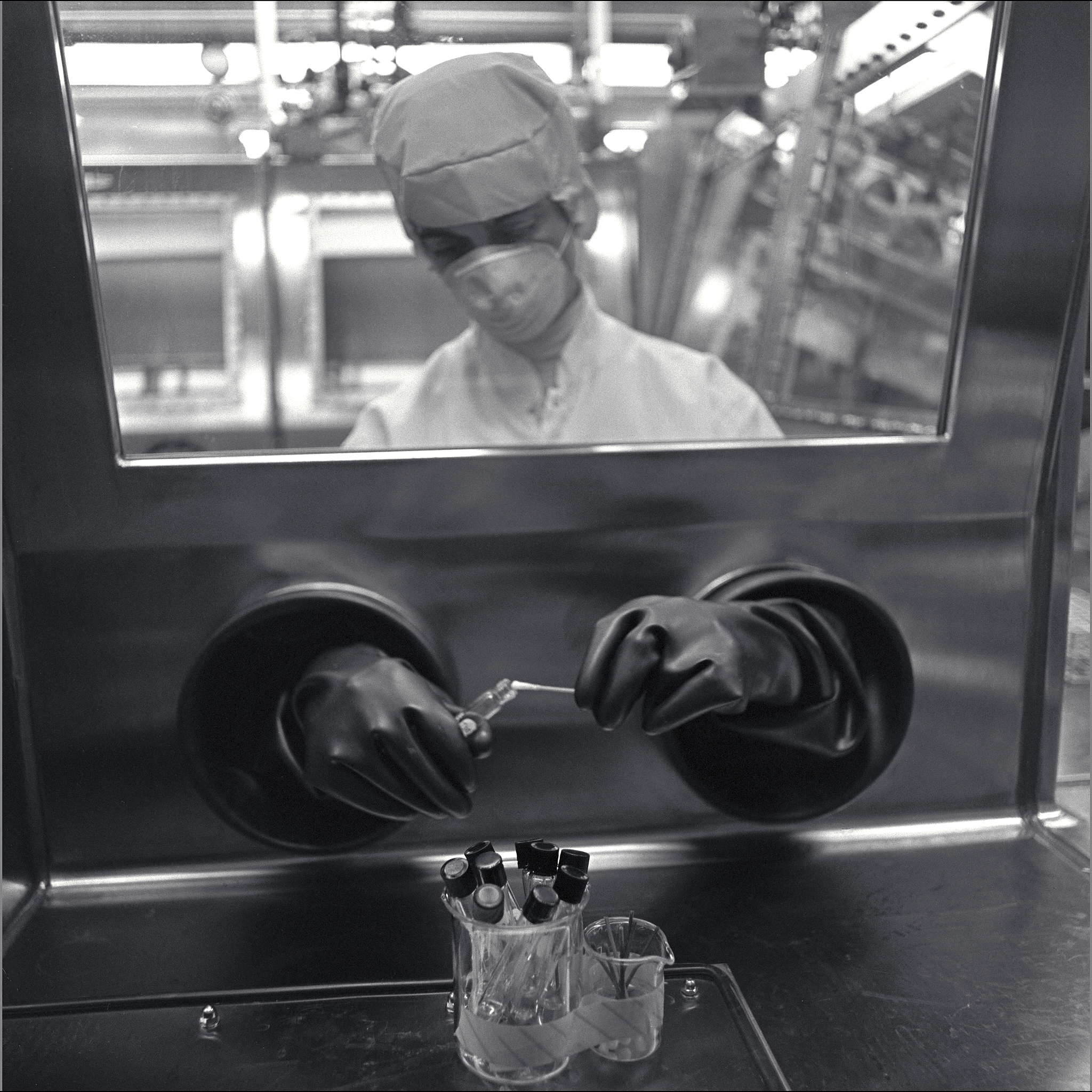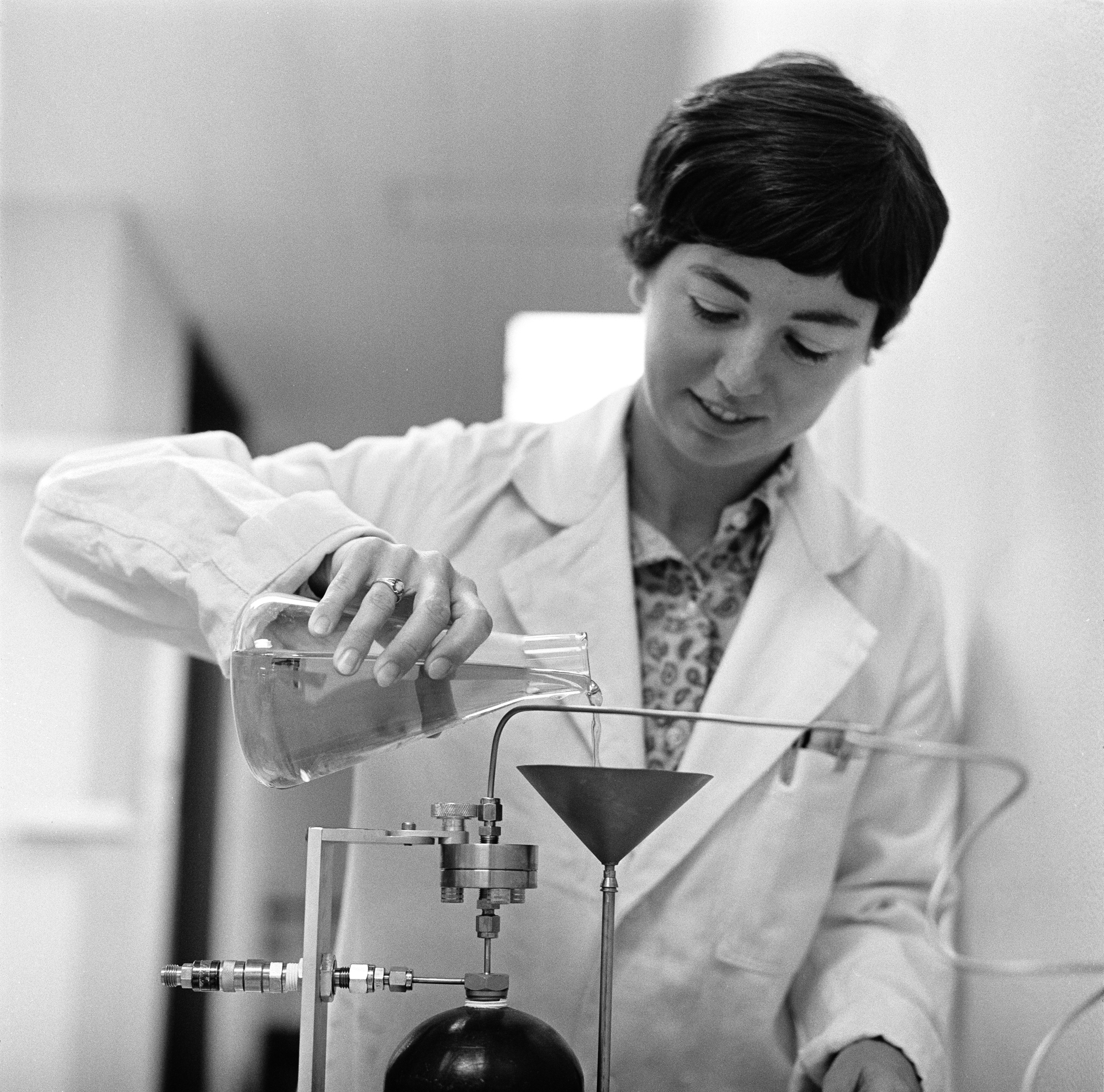Never-Before-Seen NASA Video Shows Scientists Test Apollo 11 Moon Rocks for Life in 1969
Fifty years ago, NASA's Apollo 11 mission carried the first geologic samples from the moon back to Earth — and agency has finally released footage of researchers examining those lunar samples for signs of life.
The never-before-seen footage in the video above is from 1969, when biologists and chemists at NASA's Ames Research Center in California carefully analyzed samples of moon rocks and soil collected during the Apollo 11 mission. The researchers worked in a specially designed clean room, using the most sophisticated analytical techniques of the time, according to a statement from NASA.
"We were really concerned about contaminating the samples with our own bacteria," Caye Johnson, a retired biologist from Ames who worked with the Apollo lunar samples, said in the statement. "We had to be careful that we didn’t introduce a microbe into the samples and then falsely say that we'd found life."
More coverage:
- Relive the Apollo 11 Moon Landing Mission in Real Time
- Apollo 11 Moon Landing Giveaway with Simulation Curriculum & Celestron!
- Apollo 11 at 50: A Complete Guide to the Historic Moon Landing


The samples brought back from the moon were analyzed at both the Ames and Johnson Space Center in Houston, marking researchers' first interaction with other-worldly material.
To prevent contamination, the samples were stored in jars within jars, like nesting dolls. In addition, the jars were sterilized before being opened in a clean environment by researchers wearing masks, gloves, boot coverings and smocks. Air-tight glove boxes — sealed boxes with flexible gloves integrated into the sides — were also used as an additional biological barrier.
Related: NASA's Ames Research Laboratory Explained
Get the Space.com Newsletter
Breaking space news, the latest updates on rocket launches, skywatching events and more!
Researchers tested the lunar samples with various nutrients over a range of conditions that might be suitable for life. However, as expected, their findings proved the moon was in fact devoid of living organisms, according to the statement.
"Why were we doing 300 different environments? Because on Earth today, bacteria live in all sorts of strange environments that you wouldn’t expect," Johnson said in the statement.
Their research paved the way for modern astrobiology, which aims to better understand the origin, evolution, distribution and future of life on Earth and in the universe, according to NASA.
The footage, which was originally captured on 16-mm film, was uncovered from the Ames Research Center archives in preparation for the celebration of the 50th anniversary of the Apollo moon landing on July 20. The film was digitized and remastered for public release. The full-length video can be viewed online here.
- The Apollo Moon Landings: How They Worked (Infographic)
- How the Apollo 11 Moon Landing Worked (Infographic)
- NASA's Moonwalking Apollo Astronauts: Where Are They Now?
Follow Samantha Mathewson @Sam_Ashley13. Follow us on Twitter @Spacedotcom and on Facebook.
Join our Space Forums to keep talking space on the latest missions, night sky and more! And if you have a news tip, correction or comment, let us know at: community@space.com.

Samantha Mathewson joined Space.com as an intern in the summer of 2016. She received a B.A. in Journalism and Environmental Science at the University of New Haven, in Connecticut. Previously, her work has been published in Nature World News. When not writing or reading about science, Samantha enjoys traveling to new places and taking photos! You can follow her on Twitter @Sam_Ashley13.









